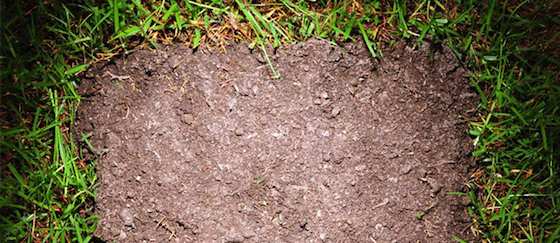- MENU
- HOME
- SEARCH
- WORLD
- MAIN
- AFRICA
- ASIA
- BALKANS
- EUROPE
- LATIN AMERICA
- MIDDLE EAST
- United Kingdom
- United States
- Argentina
- Australia
- Austria
- Benelux
- Brazil
- Canada
- China
- France
- Germany
- Greece
- Hungary
- India
- Indonesia
- Ireland
- Israel
- Italy
- Japan
- Korea
- Mexico
- New Zealand
- Pakistan
- Philippines
- Poland
- Russia
- South Africa
- Spain
- Taiwan
- Turkey
- USA
- BUSINESS
- WEALTH
- STOCKS
- TECH
- HEALTH
- LIFESTYLE
- ENTERTAINMENT
- SPORTS
- RSS
- iHaveNet.com: Home & Garden

Easy Lawn Repair Tips to Get Your Yard in Shape
by R. L. Rhodes
Patches of dead or thinned-out grass can be treated quickly and easily. Here's how.
Patches of grass die or thin out for a variety of reasons, but all is not lost.
With a little work, some grass seed and water, your lawn will be looking lovely in no time!
Skill level: Intermediate
Tools & Materials:
Rake
Power rake (optional)
Core aerator (optional)
Grass seed Spreader (optional)
Sprinkler
Before you get started treating your lawn, it's helpful to have an idea of what caused a problem. A common culprit is overgrown thatch: the matted-down plant debris, such as clippings, leaf pieces or small twigs, found at the base of grass. Another culprit is having the wrong type of grass for your area. And of course, grass can also die if the lawn hasn't been watered or fertilized properly.
Whatever the cause, taking a couple of steps will get your lawn back on track. Use the tips below to lightly break up the soil and spread the appropriate type of grass seed.
Soil
Soil can be loosened in several ways. To renovate a small section of your lawn, use hand tools. In an area where the grass is completely dead, rake up and discard all the plant debris. Simply rake deep into the soil and you'll be ready to spread the seed. If there are bare patches, just loosen the soil.
Removing thatch from your lawn protects your grass from disease, encourages proper air circulation and allows water to penetrate into the soil. Consider renting a power rake, which is useful for vigorously lifting thatch. The process also creates areas of bare soil where new grass seed can make their start. Run the power rake over the area twice, in different directions, and remove all the debris.
Aerating your lawn can also help grass grow. Aerating equipment, like a core aerator, punches through the thatch and into the ground to extract small cores of soil, which are then deposited on top of the lawn. This process will pep up your entire lawn by improving its ability to access water, boosting airflow and creating opportunities for new grass seed to thrive.
Seed
For seeding success, use quality seed that is right for your area. Also make sure the seed makes contact with the soil and keep the area moist.
Grass seed is developed for many different purposes and regions. For areas that get more than six hours of sun a day, select a seed suitable for a sunny area. Similarly, seed developed for shady areas will perform better with less light. Choose a fast-growing variety to fill in your lawn quickly. If drought has caused your lawn to fail, try planting a more drought-tolerant variety.
When you're ready to plant the grass, check the packaging for application rates. A spreader ensures that enough seed is planted while preventing waste. Walk the spreader through the area in two directions to seed evenly. It's not necessary to cover the seed with soil. You can cover with a light layer of straw.
Proper watering is also crucial. Seed must stay evenly moist to germinate. Water daily for two to three weeks. In hot weather, water twice daily.
With a little attention, bare patches and thin spots will be transformed into a lush lawn.
Photo: Corbis Images
R.L. Rhodes grew up about equal distance from the local library and his parents' vegetable garden on an acre of small-town Americana. He's currently working to conjure a bit of each into 30 square feet of sunroom in an urban apartment building.
AUTOS | HOBBIES | EDUCATION | FAMILY | FASHION | FOOD & RECIPES | HOME DECOR | RELATIONSHIPS | PARENTING | PETS | TRAVEL | WOMEN
Article: Copyright ©,
Home & Garden: "Easy Lawn Repair Tips to Get Your Yard in Shape"